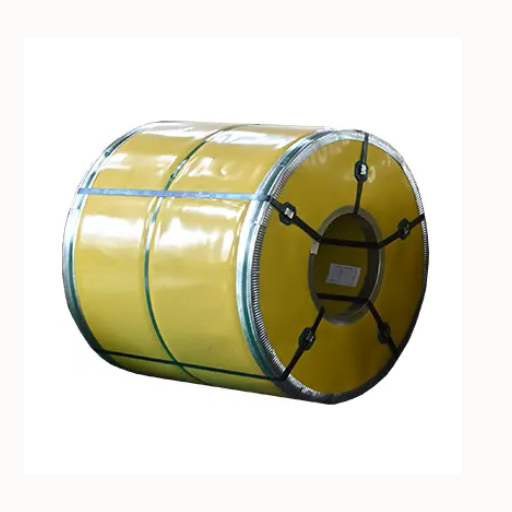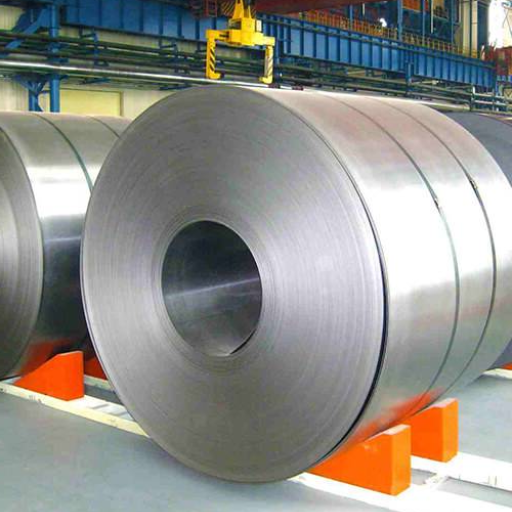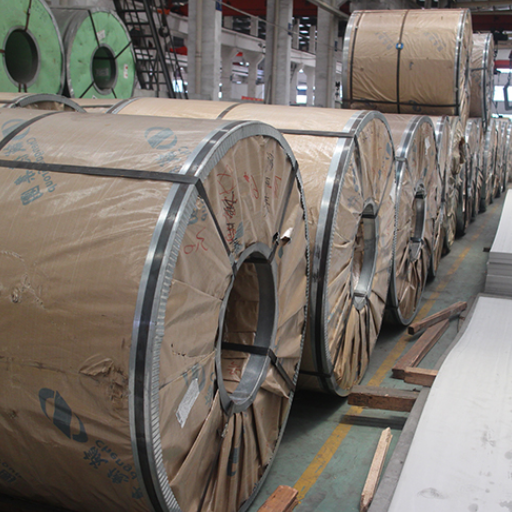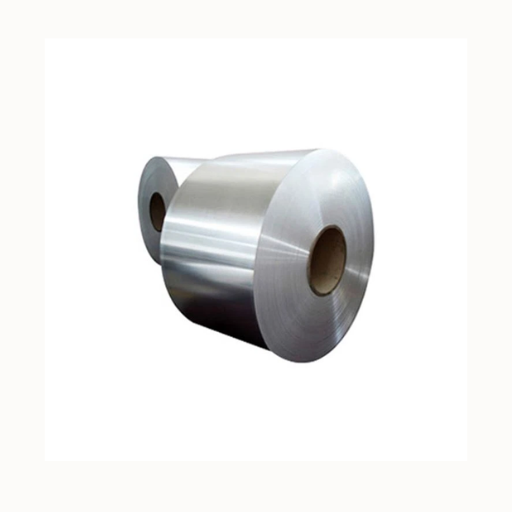In terms of reliability in several sectors, combining effectiveness, longevity, and price, 430 stainless steel coils emerge as a highly trusted selection. 430 stainless steel is widely known for being easy to fabricate, having a polished finish, being corrosion resistant, and being great for an extensive set of uses, ranging from kitchen appliances to automotive trim. With virtually countless options, working with professional suppliers and experts is what makes the difference. In this blog, we will describe the features of 430 stainless steel coil, explain why working with expert suppliers is an advantage, and describe how to best use these materials depending on your industry requirements. If you are a seasoned industry expert or simply looking to explore the possibilities, you are in the right place.
What Are the Benefits of 430 Stainless Steel?

- Corrosion Resistance
Stainless steels as a whole have relatively good corrosion resistance, especially in mild environments. This means they are highly suitable for use where there is moisture or some chemicals present.
- Cost Effectiveness
Steel grade 430 is less expensive than other grades of stainless steel, which makes it more economically advantageous in many industries, while still providing reliable performance.
- High Formability
Such materials are processed easily and can be shaped easily increasing the range of products that precision manufacturers can produce.
- Attractive Finish
Its polished finish is important for decorations; hence, these surfaces can make Stainless Steel 430 useful where an attractive look is essential.
- Magnetic Properties
Stainless steel grade 430 is magnetic, which makes it useful for some functional or industrial purposes, unlike other grades of stainless steel.
Understanding the Corrosion Resistance of 430 Stainless Steel
One of the most distinguishing features of 430 stainless steel, and the number one reason why it’s used in certain applications, is its corrosion resistance. This material is categorized under ferritic stainless steels, which means it has a relatively high chromium content, 16-18%. This chromium gets transformed into a passive chromium oxide layer ritually, which acts like a barrier to the steel. The layer defends the steel from oxidation and halts additional corrosion within most environments.
In comparison to austenitic stainless steels, 430 stainless steel exhibits moderate corrosion resistance. It is useful in mildly corrosive conditions indoors where the exposure to moisture and water is limited. However, 430 may be susceptible to surface rust or pitting over time in high chloride environments or coastal locations.
Still, with adequate maintenance and cleaning, the alloy’s protective characteristics can be improved. Regular cleaning of dirt and salt residues can prolong the material’s lifespan in less-than-ideal conditions.
Research and studies also suggest that 430 stainless steel has excellent performance in controlled atmospheric conditions, or where exposure to harsh chemicals is limited. Its moderate pricing, coupled with its ability to resist corrosion under certain conditions, makes it a widely favored option for food service equipment, kitchen appliances, and decorative features for interiors.
Exploring the Mechanical Properties of 430 Grade
The mechanical properties of 430 stainless steel influence its selection for specific applications. These properties also define 430 as meeting certain functional and structural benchmarks. Stated below are 5 key mechanical properties of 430 grade stainless steel:
- Tensile Strength
The tensile strength of 430 stainless steel is pegged at around 450 MPa (megapascals). This level of tensile strength offers adequate resistance and durability to stretching during tension.
- Yield Strength
The yield strength is around 205 MPa for this material. It shows the stress that leads to the material beginning to undergo plastic deformation whilst still retaining some level of structural integrity.
- Elongation at Break
The 430 grade is capable of an elongation of about 22% in the annealed condition. This adds to ductility and measures how far a material can be deformed without breaking.
- Hardness
Being moderately demanding, 430 stainless steel with a Brinell hardness of about 183 HB will provide reasonable resistance to wear and surface deformation.
- Modulus of Elasticity
The stiffness of 430 stainless steel, meaning the ability of the material to return to its default shape after being elastically deformed, is shown by the modulus of elasticity which is about 200 GPa (gigapascals).
The highlighted mechanical properties balance strength, ductility, and wear resistance, adding versatility to the grade in practical applications.
Why Choose Ferritic Stainless Steel for Your Needs?
| Key Point | Description |
|---|---|
| Corrosion Resistance | Good resistance in moderate environments |
| Magnetic Properties | Suitable for magnetic applications |
| Cost-Effectiveness | More affordable than austenitic grades |
| High Chromium Content | Enhances corrosion and oxidation resistance |
| Low Carbon Content | Reduces risk of intergranular corrosion |
| Good Ductility | Allows for forming and shaping |
| Stress Corrosion Resistance | Performs well under stress |
| Temperature Tolerance | Suitable for high-temperature applications |
| Weldability | Limited but manageable with precautions |
| Applications | Automotive, kitchenware, industrial equipment |
How Does Cold Rolled 430 Stainless Steel Coil Compare?

The cold-rolled 430 stainless steel coil does provide benefits like other materials. It has high corrosion resistance. These factors make the steel useful for hostile, damp, or chemically active environments. The cold rolling offers a smooth surface finish, which can be important for many uses where appearance matters. While not as ductile as some other steels, there is reasonable moderate ductility and strength. The steel holds its shape under stress and is favorable for the artifacts. Therefore, it is well suited for kitchen appliances, trim, and car parts, as well as building features.
Benefits of Cold-Rolled Stainless Steel Coil in Industrial Applications
The versatility and unique properties of cold-rolled stainless steel coil make it an ideal candidate for industrial applications. Cold-rolled stainless steel offers the following five benefits.
- Aesthetically pleasing surfaces
Surface appearance, surface treatment, and surface polish are all taken into consideration during the cold rolling process, giving it a polished and smooth surface. As such, the material’s functionality and appearance are enhanced, making it best for areas that require wholeness, professionalism, and cleanliness, like food grade kitchen tools, decorative and architectural components, etc.
- Dimensional accuracy
Other than a superior surface finish, the cold-rolled stainless steel coil also provides additional advantages like precise thickness and tolerances. This ensures a good performance in a precision application. For example, automotive trim and industrial machinery parts need consistent size and precision which this steel offers.
- Strength and Durability
Cold rolling also gives the material a greater tensile strength, making it able to withstand a lot of stress without deformation. This increases the shape reliability and is good for demanding applications like structural supports and pressure vessels making it a reliable option.
- Resistant to Rust and Corrosion
The cold-rolled stainless steel coil has excellently resistant capabilities against getting corroded or rusted, performing well in harsh environments like the marine and chemical industries. This property allows cold-rolled stainless steel coil to get worn out or deteriorated less than other materials ensuring a long lifespan, reduced maintenance costs, and increased durability.
- Diverse Uses
The durability, beauty, and resistance to rust make cold-rolled stainless steel coil useful in construction, transportation, energy, and even household appliances. Its versatility alone makes it easier to eliminate different materials for various applications, simplifying production and minimizing expenses.
Comparing Cold Rolled and Hot Rolled Options
| Key Point | Cold Rolled Steel | Hot Rolled Steel |
|---|---|---|
| Processing | Rolled at room temperature | Rolled at high temperature |
| Cost | Higher due to extra processing | Lower due to simpler processing |
| Surface Finish | Smooth and shiny | Rough and scaly |
| Strength | Higher tensile strength | Lower tensile strength |
| Dimensional Accuracy | Precise dimensions | Less precise dimensions |
| Applications | Aerospace, furniture, appliances | Construction, automotive, railroads |
| Workability | Harder to form | Easier to form |
| Internal Stress | Higher internal stress | Minimal internal stress |
What Should You Look for in a 430 Stainless Steel Coil Supplier?

When picking a supplier for a 430 stainless steel coil, consider the following:
- Quality Assurance: Make sure the supplier guarantees the industry-grade material provided meets your standards and specific needs.
- Industry Experience: Consider companies that have been in the market long enough to be known for their stainless steel coils production and supply chain.
- Reliability: Focus on suppliers with a reputation for dependable delivery windows and consistent customer service.
- Customization Options: Check that the supplier can meet your exact, including, but not limited to, dimensions, required finishes, and surface treatment specifications.
- Competitive Pricing: Confirm there aren’t extra fees disguised as additional services in the cost breakdown.
- Sustainability Practices: A supplier that practices ethical sourcing and environmentally responsible production should also be considered.
By focusing on these, you will surely be able to find a reliable supplier for your 430 stainless steel coils.
How to Assess Coil Manufacturer Capabilities
| Key Point | Description |
|---|---|
| Experience and Expertise | Years in industry and technical knowledge. |
| Technological Advancements | Use of modern tools and automated processes. |
| Quality Control | Rigorous testing and adherence to standards. |
| Certifications | Compliance with ISO and industry-specific standards. |
| Customization Capability | Ability to meet specific design and material needs. |
| Flexibility in Production | Adaptability to changes and quick adjustments. |
| Customer Service | Responsiveness and clear communication. |
| Global Presence | Availability of facilities worldwide for efficient delivery. |
| Price and Value | Balance between cost and product quality. |
| Warranty | Length and coverage of product warranty. |
The Importance of AISI 430 Certification
In my opinion, having AISI 430 certification is important because it ensures that the stainless steel coil in question is of a certain quality and performance standard. Furthermore, the material’s accuracy concerning properties such as corrosion resistance, durability, and strength for several industrial applications is confirmed. Certification of the steel gives me peace of mind regarding the purchasing decisions I make, especially knowing that the product will meet industry standards and my needs.
Why Is Stainless Steel Coil Popular in Automotive and Other Industries?

The versatility, excellent corrosion resistance, and high durability of stainless steel coil make it a favorite in the automotive industry and others. These properties make it suitable for the fabrication of components that operate in hostile and heavily used environments like exhaust systems, structural components, and springs. In addition, the stainless steel coil’s strength-to-weight ratio improves efficiency and performance, which is critical in automotive applications. Moreover, stainless steel is recyclable, which is ideal for industries that strive to mitigate environmental harm.
The Role of Automotive Trim in Modern Vehicles
The trim of a vehicle is extremely vital when it comes to the looks and the modern functions of the car. This includes numerous parts such as moldings, seals, decorative strips, and other forms of the interior which helps in the aesthetics of the vehicle, improves the vehicle, and enhances the overall experience of the user, According to some recent industry analyses, the global automotive trim market is expected to climb up to USD 45.7 Billion by 2028 with a surgent compound annual growth rate of 4.5% between 2023 and 2028. This is mainly driven by consumer needs for brand new vehicles customized to their choice, Innovations in materials, and the overall manufacturing of the parts.
Modern trims now utilize newer materials such as stainless steel, aluminum, carbon fiber, and advanced plastics. These materials improve durability while also decreasing a vehicle’s weight and helping it endure diverse conditions for longer. For example, lightweight plastic trims enhance fuel economy by decreasing the vehicle’s weight. On the other hand, stainless steel trims are popular for their corrosion resistance and aesthetic value.
Automotive trim also has important functional roles, including making vehicles more aerodynamic and reducing noise by sealing gaps. Innovations like chrome-free coatings and other green materials are being introduced to comply with sustainability and environmental standards. With further advancements in EVs (electric vehicles), design trends are also changing as automakers implement features such as dynamic lighting trims to improve safety and aesthetics.
Automotive trim thus embodies a perfect blend of style and utility, ensuring vehicles meet performance standards while answering the need for environmentally friendly vehicles with sleek designs.
Applications of Cladding with 430 Stainless Steel
| Key Application | Description |
|---|---|
| Automotive Industry | Used in trim, muffler systems, and flue linings. |
| Architectural Cladding | Applied in building facades and decorative panels. |
| Industrial Equipment | Utilized in heat exchangers and chemical processing units. |
| Kitchen Appliances | Found in cookers, dishwashers, and sinks. |
| Power Generation | Used in high-temperature and stress-resistant components. |
| Oil and Gas Industry | Applied in offshore production and refining equipment. |
| Food Processing | Used in hygienic and corrosion-resistant environments. |
| Structural Applications | Suitable for bridges, storage tanks, and process plants. |
Enhancing Formability in Manufacturing
Formability pertains to shaping materials for manufacturing processes like those of 430 stainless steel. Manufacturers can build complex shapes and designs with high formability while keeping the structural integrity of the material. Here are five basics that enhance formability in manufacturing:
- Maintaining Temperature
A boost in temperature with controlled heating can make 430 stainless steel easier to form, simplifying shape construction and reducing the risk of cracking or deformation. Sharp temperature changes may affect elongation in different ways depending on what process applied.
- Material Thickness Optimization
With the ability to form intricate designs onto pieces, gaps in standard dimensions with formability can be solved by modifying the sheet thickness. Strength is retained with thinner sheets while achieving sufficient flexibility.
- Forming Lubrication
Surface quality is improved with reduced friction beyond just aesthetic purposes which is crucial for honing a clear finish on stainless steel parts.
- Advanced Tooling Techniques
Elevated precision with designed dies and molds ensure no maldistribution of pressure occurs while subjects are being formed. This futher reduces the chances of uneven material stresses result in warping or tearing.
- Pre-Processing Treatments
Processes that include annealing can help in softening the material prior to forming, thus improving its workability. Annealing 430 stainless steel helps in relieving internal stresses and rearranging the crystal lattice pattern making it more ductile and so easier to work with.
All these methods enhance the effectiveness of the manufacturing steps performed to process 430 stainless steel and ensure that it possesses the required properties for application into industries.
What Are the Differences Between 430 and 304 Stainless Steel?

The difference between 430 and 304 stainless steel mostly comes from their composition and properties. 304 stainless steel is an austenitic steel with chromium and nickel components, providing high durability along with excellent corrosion resistance and ductility. 430 stainless steel contains ferritic steel, meaning that it possesses higher iron and chromium content, along with no nickel, which makes it magnetic and cheaper. It is only mildly corrosion resistant, enduring less than 304 stainless steel under harsh conditions.
As for 430 stainless steel, it does not exhibit magnetic properties and is non-magnetic under normal conditions. Withstanding moisture and chemicals makes it useful for a wide variety of applications.
Selecting 430 or 304 stainless steel depends on cost efficiency, corrosive environment, and bearable mechanical strength.
Comparing Corrosion Resistance and Durability
While looking at 304 and 430 stainless steel, their durability and resistance to corrosion are the most important things to think about. There is a comparison focusing on both aspects below.
- Corrosion Resistance in Chloride Environments
- 304 stainless steel is best known for resisting salty water or coastal areas because it contains more chlorides. Higher amounts of nickel and chromium, alongside salty water or coastal areas, help form a robust protective oxide layer.
- However, 430 stainless steel is more prone to cleaving pitting, and chamfer corrosion in chloride regions due to its lower percentage of chromium.
- Durability Against Oxidation
- Under higher 304 conditions, steel performs wellbeing by maintains its structure alongside corrosion. It is useful when there is continuous exposure to heat.
- With hot steam applications, 430 stainless steel shows decent hot oxidation resistance but has lower hot tolerances.
- Resistance to Acids and Chemicals
- For chemical exposure, 430 stainless steel is more suited as it is less hostile than 304 which is blunt towards vigorous acid and mild alkaline.
- Because of the lower chemical exposure regions, 430 stainless steel is more applicable as its acid and alkali resistance is limited.
- Abrasion and Wear Resistance
- In general, the abrasion and wear resistance of 304 stainless steel is greater than the rest of the types, resulting in longer-lasting performance in challenging work conditions.
- 430 stainless steel is likely to suffer from higher abrasions over time, especially in highly concentrated stress areas.
- Outdoor Usability
- When considering the prolonged exposure to the outdoors, 304 stainless steel is more reliable due to advanced imperial corrosion resistance, especially in places that are pretty damp and humid.
- 430 stainless steel is suitable for outdoor applications, but may need some care or protective paint to avoid rust.
These comparisons can aid in choosing materials for specific requirements and working conditions, leading to enhanced operational efficiency and greater savings.
Understanding the Unique Alloy Composition
| Key Point | Description |
|---|---|
| Definition | Mixture of base metal and alloying elements. |
| Base Metal Role | Provides structure and primary properties. |
| Alloying Elements | Modify properties like strength, corrosion resistance. |
| Types of Alloys | Substitutional and interstitial are based on atomic arrangement. |
| Common Examples | Steel, brass, bronze, aluminum alloys, and titanium alloys. |
| Strength and Durability | Alloys are stronger and more durable than pure metals. |
| Corrosion Resistance | Enhanced by elements like chromium and nickel. |
| Applications | Used in construction, transportation, electronics, and medical devices. |
| Customizability | Tailored for specific properties and applications. |
| Environmental Impact | Alloy production can have higher energy and environmental costs. |
Choosing the Right Type of Stainless Steel for Your Project
When selecting a type of stainless steel for my projects, my focus is on the specific needs of the application. I first analyze the environment: will it be subjected to high temperatures, moisture, or corrosive materials? Subsequently, I determine the level of strength and durability required, and whether weldability or machinability is important. I also consider the aesthetic options like the type of finish, along with the price and environmental impact. Meeting these considerations allows me to select the precision stainless steel for the specific need.
References
- A basis for magnet improvements in the US fusion magnet program – This document discusses stainless steel stock and its properties, which might provide insights into material specifications. Read more here.
- A method of fabricating coated splices for oilfield applications – This paper includes research on suppliers and their product quality, which could be useful for supplier evaluation. Read more here.
- ccco C – This source compares AISI type 316 stainless steel with other materials, which might help in understanding the context of 430 stainless steel. Read more here.
Frequently Asked Questions (FAQ)
Q: What are the main characteristics of a 430 stainless steel coil?
A: The 430 stainless steel coil is known for its excellent corrosion resistance and good oxidation resistance. It is a ferritic, straight chromium alloy with magnetic properties, making it ideal for applications like kitchen appliances and decorative trim. It is often used in cold rolled stainless steel coil form for various industrial applications.
Q: How does 430 stainless steel coil compare to other grades like 304 or 316?
A: While 430 stainless steel coil offers good corrosion resistance and is more cost-effective, it is less resistant to corrosion than 304 and 316 grades. 304 and 316 offer better weldability and oxidation resistance, with 316 providing superior resistance to chlorides and acidic environments. However, 430 is a popular choice for applications where these higher properties are not required.
Q: What is the significance of the 2b finish on stainless steel 430?
A: The 2b finish on stainless steel 430 refers to a smooth, moderately reflective surface commonly used in industrial applications. This finish enhances the coil’s aesthetic appeal and makes it easier to clean, making it suitable for applications like kitchen appliances and architectural elements.
Q: Who are the leading stainless steel coil manufacturers for 430 grade?
A: Leading stainless steel coil manufacturers for the 430 grade include companies like TISCO and other global steel coil manufacturer and supplier networks. These manufacturers are known for producing high-quality 430 stainless steel products with consistent quality and performance.
Q: What are the benefits of using a cold rolled stainless steel coil for 430 ss?
A: Cold rolled stainless steel coil for 430 ss offers benefits such as improved surface finish, increased strength, and tighter dimensional tolerances. This process also enhances the coil’s mechanical properties, making it suitable for precision applications.
Q: How does a 430 stainless steel coil manufacturer ensure quality in their products?
A: A 430 stainless steel coil manufacturer ensures quality through stringent production processes, including careful selection of raw materials, precise annealing, and thorough testing for mechanical properties and resistance to corrosion. They also adhere to industry standards and certifications.
Q: What applications are best suited for aisi 430 stainless steel?
A: AISI 430 stainless steel is best suited for applications requiring good aesthetic appeal and moderate corrosion resistance, such as kitchen appliances, automotive trim, and architectural components. Its magnetic properties also make it ideal for certain industrial applications.
Q: How does the coil price of 430 stainless steel compare to other grades?
A: The coil price of 430 stainless steel is generally lower than that of higher alloy grades like 304 or 316. This cost-effectiveness, combined with its good corrosion resistance and oxidation resistance, makes it a popular choice for applications where extreme conditions are not present.
Q: What is the importance of annealing in the production of 430 cold rolled stainless steel coils?
A: Annealing is crucial in the production of 430 cold rolled stainless steel coils as it relieves internal stresses, enhances ductility, and refines the grain structure. This process results in a material that is easier to work with while maintaining its mechanical properties and corrosion resistance.







